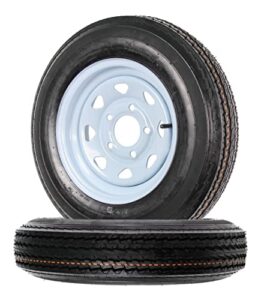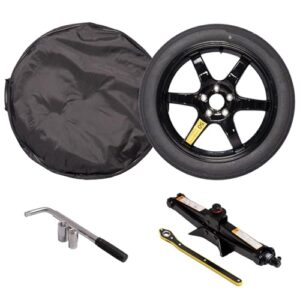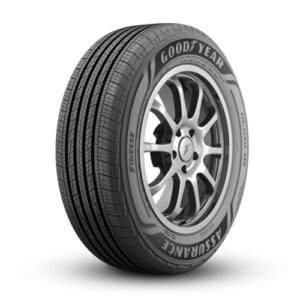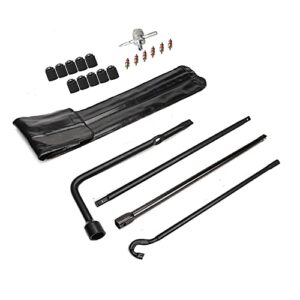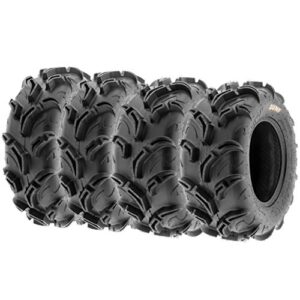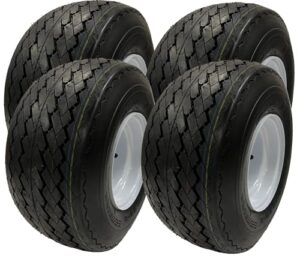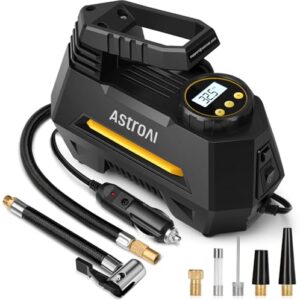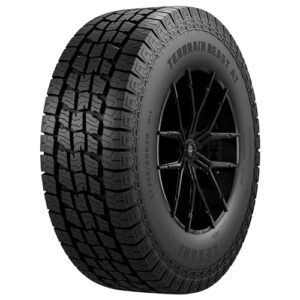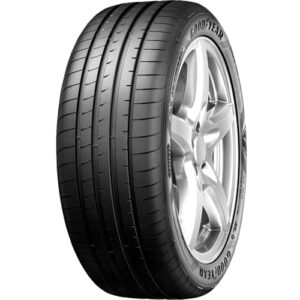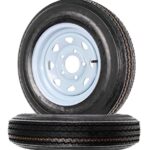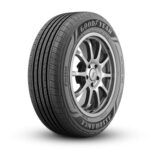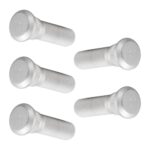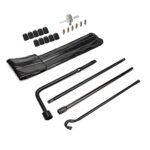Tire pressure drops in cold weather because air contracts when temperatures fall. Less air volume means lower pressure inside the tires.
As autumn transitions to winter, drivers often notice a drop in their vehicle’s tire pressure, and with good reason. The connection between temperature and air pressure is a fundamental aspect of physics that affects everyday life, including tire maintenance. For many, tire pressure is not something that’s regularly on their minds until the dashboard warning light catches their attention.
Understanding this phenomenon is essential for maintaining optimal tire performance and vehicle safety. Keeping tires properly inflated ensures better traction, fuel efficiency, and extends tire life, meaning those chilly mornings can have a significant impact on your drive. Regular tire pressure checks during cold months are crucial, as every 10 degrees drop in temperature could mean a 1 to 2 PSI decrease in tire pressure. This simple yet often overlooked aspect of car care can prevent unnecessary complications on the road.
The Science Of Shrinking Air
Have you ever noticed that tire pressure seems to drop as the weather gets colder? This isn’t just a coincidence—it’s science in action. The air isn’t actually disappearing; it’s condensing. Let’s explore the physics behind this chilly phenomenon.
Temperature’s Influence On Air Density
When temperatures drop, air contracts. Think of air like a balloon. In the cold, a balloon shrinks down. It’s the same with air in your tires. There’s less space between air molecules, so the air becomes denser. This density change leads to a decrease in tire pressure, and the reason behind this is rooted deeply in the dynamics of physics, which we call the Perfect Gas Law.
The Perfect Gas Law In Practice
The Perfect Gas Law is a formula that connects temperature, pressure, volume, and the amount of gas. It’s written as PV = nRT. Let’s break this down:
P(Pressure) falls whenT(Temperature) falls.V(Volume) remains constant in a sealed tire.nis the amount of gas (number of molecules), which doesn’t change.Ris a constant that never changes.
In simpler terms, when you apply this law to your tires, you see that as the temperature outside drops, the pressure inside your tires does too. This isn’t due to a leak or a hole; it’s purely a response to the temperature change.
| Temperature Change | Pressure Effect |
|---|---|
| Colder Temperatures | Decrease in Pressure |
| Warmer Temperatures | Increase in Pressure |
Next time you face a low tire pressure warning on a frosty morning, remember the physics at play. It’s just the air contracting, proving that even your daily commute has a touch of science involved.

Tire Pressure 101
When winter approaches, understanding tire pressure becomes crucial. Cold weather can decrease tire pressure, leading to various driving issues. Proper knowledge about tire components and pressure measurement is essential. This section dives into why tire pressure matters and how to maintain it in colder climates.
Components Of A Tire
Tires are complex. Each part plays a role in keeping your vehicle moving smoothly. Below is a brief look at these components:
- Tread: The patterned outer layer that touches the road.
- Sidewall: The side of the tire, vital for stability.
- Bead: Ensures the tire stays attached to the rim.
- Carcass: The tire’s skeleton, giving it shape and strength.
- Valve Stem: A tiny but critical component for inflating the tire.
How Tire Pressure Is Measured
Tire pressure is measured in pounds per square inch (PSI). It ensures your tires are inflated correctly for optimal performance. A regular tire pressure gauge can help you check the PSI. Check your vehicle’s manual to discover the recommended PSI and target that range.
| PSI Level | Status |
|---|---|
| Below recommended | Too Low |
| At recommended | Perfect |
| Above recommended | Too High |
Seasonal Shifts In Tire Inflation
As seasons change, so does the air pressure in your car’s tires. Cold weather often leads to lower tire pressure, raising safety concerns and affecting your vehicle’s performance. Understanding the reasons behind these shifts is key to maintaining optimal tire health year-round.
Effects Of Winter On Tire Pressure
Colder temperatures cause air to contract. This means there is less pressure inside the tire during winter. Each drop in 10 degrees Fahrenheit can result in losing 1-2 pounds per square inch (PSI) of tire pressure.
Low tire pressure affects grip and increases wear. It can also lead to higher fuel consumption and decrease tire lifespan. Ensuring tires are properly inflated is crucial during winter months.
Monitoring Changes Through The Seasons
Regularly check your tire pressure to stay safe and efficient. Use a reliable tire gauge to monitor pressure. Aim to check your tire pressure at least once a month and before long trips. The right time to check is when tires are cold, typically before driving in the morning.
Remember to adjust the pressure based on manufacturer recommendations, taking note of seasonal changes. Keeping a log book can help track pressure changes and predict when to add air to your tires.

Cold Weather: Tires’ Nemesis
When temperatures drop, tire pressure follows suit. Understanding this phenomenon is crucial for safe winter driving. Let’s explore how cold air becomes a tire’s nemesis and keeps your car running smoothly even when the mercury falls.
Thermal Contraction Of Tires
Air molecules move slower in the cold. This causes them to take up less space. Your tires contain air, which shrinks as it cools, leading to decreased tire pressure. It’s a simple effect of physics known as thermal contraction.
Risk Factors For Pressure Drop
Different factors heighten the risk of losing tire pressure during cold spells. Here’s a quick look at what can amplify this effect:
- Older tires may be more vulnerable.
- Leaks are harder to detect in the winter.
- Infrequent use can exacerbate pressure loss.
- Driving on underinflated tires damages them faster in cold conditions.
Proper Tire Inflation Benefits
Keeping tires properly inflated is crucial, especially in cold weather. Lower temperatures often mean lower tire pressure. Let’s explore the benefits of maintaining the right tire pressure.
Increased Safety On The Road
Tire pressure affects grip. Adequate pressure ensures better traction. This means safer handling and braking. In winter, roads can be slippery. Well-inflated tires minimize the risks. They adapt to road conditions, preventing accidents.
Prolonging Tire Life
- Correct pressure wards off tire damage.
- It prevents uneven wear.
- Tires last longer when stress is evenly distributed.
Tires that maintain their structure resist punctures and blowouts.
Fuel Efficiency Considerations
Tires at proper pressure reduce rolling resistance. This leads to less fuel consumption. A well-inflated tire makes the car work less to move. This means savings at the gas pump. It also means less CO2 emissions. We save money and protect the planet.
Mitigating Pressure Loss In Winter
Mitigating Pressure Loss in Winter involves understanding how cold temperatures affect tire pressure and taking proactive steps. Tires losing pressure during colder months pose a common challenge for drivers. The following tips can assist in maintaining proper tire pressure throughout the winter season.
Checking Pressure Regularly
Consistent monitoring represents a key method in preventing tire pressure decrease. Tires should be checked at least once a month. For accuracy, perform pressure checks when the tires are cold. Use a reliable gauge to ensure correct readings and compare them with the manufacturer’s recommended PSI levels.
Here are steps to check your tire pressure effectively:
- Wait until your tires are cold.
- Remove the cap from the valve stem.
- Press the tire gauge onto the valve.
- Read the pressure level on the gauge.
- Fill the tire with air if needed.
- Replace the valve cap securely.
Using Nitrogen To Stabilize Pressure
Using nitrogen in tires can reduce the rate of pressure loss. Nitrogen molecules are larger than oxygen, which slows its escape through the tire material. This results in a more consistent tire pressure, also aiding in:
- Improving fuel efficiency,
- Decreasing wear and tear,
- Improving safety.
Nitrogen use benefits come from its stability under temperature changes. For best results, keep tires inflated exclusively with nitrogen and avoid mixing with regular air.
Technology’s Role In Tire Monitoring
Cold weather can cause tire pressure to drop, but modern technology offers tools to keep track of changes. The right tech ensures tires stay at their best, even in the cold.
Advancements In Pressure Sensors
Tire sensors have gotten smarter. They now send real-time data to your dashboard. With this tech, you get instant alerts when pressure drops. This leads to safer drives in the cold.
- Self-calibrating: Adjusts to temperature shifts.
- Battery efficiency: Longer life means reliable readings.
- Accuracy: Tells you when air is needed to the PSI.
Smart Tires: A Future Solution?
Smart tires could be the next step. Imagine a tire that adjusts pressure on its own. No need to check or fill them manually.
| Feature | Benefit |
|---|---|
| Integrated sensors | Real-time monitoring |
| Automated pumps | Self-inflation when needed |
| Data analytics | Personalized reports for maintenance |
Expert Advice For Cold Climates
As temperatures drop, tire pressure follows suit. Understanding the impact of cold climates on tire pressure is pivotal for safe driving. Read on for essential tips and strategies designed to keep your tires in top condition during the colder months.
Recommended Tire Pressure Levels
Keeping your tires at the right pressure level is crucial. It ensures optimal performance and safety. Check your vehicle’s manual for the manufacturer’s recommended tire pressure levels. Do this before the temperature begins to plummet. Remember, for every 10-degree drop in temperature, your tire’s pressure can decrease by about 1 psi.
| Temperature | Pressure Change |
|---|---|
| 70°F (21°C) | Standard PSI |
| 30°F (-1°C) | -4 PSI |
Consistently monitor tire pressure using a reliable gauge. Do this at least once a month and adjust accordingly to prevent potential hazards.
Seasonal Tire Swap Strategies
In regions that experience severe winter weather, consider swapping to winter tires. These tires use special rubber compounds that remain flexible in the cold, providing better grip and safety.
- Install winter tires before the first snowfall.
- Use tires marked with a “snowflake on the mountain” symbol. They indicate suitability for severe snow conditions.
- Store off-season tires in a cool, dry place.
- Reinstall all-season tires once temperatures consistently rise above 45°F (7°C).
With these expert tips, your travels in cold climates will be safer and more efficient. Remember to always consult your vehicle’s manual and a professional for personalized advice.
Common Myths About Tire Pressure
Tire pressure can often be a source of confusion. In colder weather, many drivers notice a drop in tire pressure. Urban legends and old wives’ tales can muddy the waters, causing unnecessary worry or improper tire maintenance. Let’s clear up some common misconceptions and set the facts straight.
Debunking Misconceptions
There are myths that have steered drivers off course. One such myth is that you cannot trust tire pressure sensors in the cold. Another is that adding extra air prevents natural deflation in winter. These are not true. Proper tire maintenance remains critical regardless of weather.
- Tire pressure sensors are reliable, even in cold weather.
- Overinflating tires does not fix winter pressure issues and can be unsafe.
- Regular checks are better than seasonal adjustments for tire pressure.
Facts Every Driver Should Know
Tire pressure drops in cold weather due to the basic laws of physics. Air contracts when cold, lowering the pressure inside the tires. For every 10 degrees drop in temperature, tires can lose 1-2 psi. It’s crucial to check tire pressure regularly and maintain the manufacturer’s recommended level.
| Temperature Drop | Tire Pressure Loss |
|---|---|
| 10°F | 1-2 psi |
| 20°F | 2-4 psi |
| 30°F | 3-6 psi |

Frequently Asked Questions
Should I Put Air In My Tires When It’s Cold?
Yes, you should put air in your tires when it’s cold, as tire pressure decreases with dropping temperatures. Maintain proper inflation per your vehicle’s recommendation.
Is It Normal To Lose Tire Pressure In Cold Weather?
Yes, it’s normal for tires to lose pressure in cold weather, as air contracts when temperatures drop. Regularly check and adjust tire pressure during winter months.
Is It Okay To Drive With Low Tire Pressure In The Cold?
Driving with low tire pressure, especially in cold conditions, can compromise your vehicle’s handling and safety. Always check and inflate tires to the recommended level before driving.
How Do I Keep My Tires From Losing Air In Cold Weather?
Check tire pressure regularly, especially during temperature drops. Use nitrogen to maintain stable pressure. Ensure tires are properly sealed and replace any worn seals or valves. Regularly inspect tires for punctures or damage. Keep a tire pressure gauge handy for frequent monitoring.
Conclusion
As temperatures drop, so does tire pressure, often catching drivers off guard. Understanding this connection helps ensure proper vehicle maintenance during colder months. Remember to regularly check your tires to avoid the pitfalls of low pressure. Stay safe on the road by keeping up with simple yet crucial checks.




